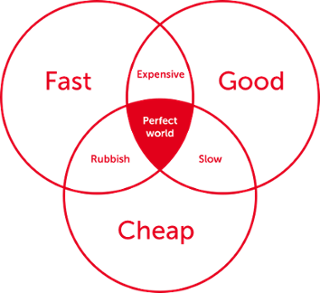New year, new start, new projects – maybe Data Management projects?
We would like to continue educating you on how to leverage your data for business success.
New year, same resolution. We longed to get back in touch with you to continue sharing fresh insights on Data Management and Multichannel Marketing topics.
The concept of a Product Information Management aka PIM solution is getting a lot of attention from companies willing to improve their Multichannel Marketing and achieve a seamless consumer experience. Great. But what about the concept of a Master Data Management aka MDM solution which still remains too obscure for non-IT specialists and whose benefits still remain unclear or hard to measure?
Additionally, people simply mix up these two Data Management solutions. The truth is: one, PIM is only a part of MDM; two, MDM has higher purposes than Marketing: it improves your overall business efficiency by optimizing the internal & external collaboration, and providing a unique point of reference for all your business data.
Don’t miss out on our next articles, giving examples of the usage of a MDM solution and its long-term benefits (just to make sure: you can subscribe to our blog updates here below).
And for now, to start this year with a little smile, enjoy some pearls of humour (and wisdom) about project management, which are highly relevant to the implementation of a data management solution – they could be considered as golden rules!
- If you don’t know where you’re going, any road will take you there
If one of your new year resolutions is to consolidate your IT strategy with the help of an additional tool, find an answer to this fundamental question: “what problem(s) do I need to resolve?” It is crucial to define your business need and clearly set your expectations. Instead of saying “I want to get my data well organized and centralized”, try something like “give the accounting team an easy access to information needed for invoicing”, or “create automated workflows between the sales and marketing department”, or “save time on producing reports.” During this crucial stage – don’t hesitate to involve all necessary people to get their insights and visions of the challenges they are facing!
- Fast-cheap-good: you can have only two of them
After having defined your business need and having selected your future solution, there is another point that needs to be considered. Get ready for this never ending struggle to reach that balance between high quality, reduced costs and respected deadlines:

- The first 90% of a project takes 90% of the time. The last 10 % takes the other 90%
Referring to the previous point, a valuable advise concerning the respecting of deadlines while implementing a solution can be given due to the “ninety –ninety-rule.” It is mostly used in the software development, and confirms the fact that very often, a huge amount of the time is spent on relatively small, but complicated sections, often underestimated while fixing deadlines and scheduling a project. Thus, based on false, too optimistic predictions, the projects are most of the time over-running schedules.
This is a situation everyone is familiar with, right? Speaking about project management, those tasks are regularly considered as “side projects” which are easy to handle at first glance, yet they can take a lot more time than planned.
In order to minimize this danger, try to evaluate all possible stages: isn’t the time allocated for the data collection and centralization too small? If your data is dispersed, not synchronized, nor standardized, this stage could take up additional time. Are such activities as user right’s configuration, change management and user trainings given all the importance they deserve? All these “side” tasks should really be considered as essential milestones in your project.
- To estimate a project, work out how long it would take one person to do it – then multiply that by the number of people on the project
Yes, this is exaggerated, but there lies truth in it: sometimes, only few people are involved in a project, who are incapable of solving the issue and finding the right solution. Other times, there are so many, leading them to create more problems (than they can actually solve!). Different stages of the project require different numbers of participants, which requires careful throught and estimation.
-
And last, but not least! Please remember that there’s never enough time to do it right the first time, but there’s always enough time to go back and do it again
Happy New Year and have a good start for all of your future projects!


